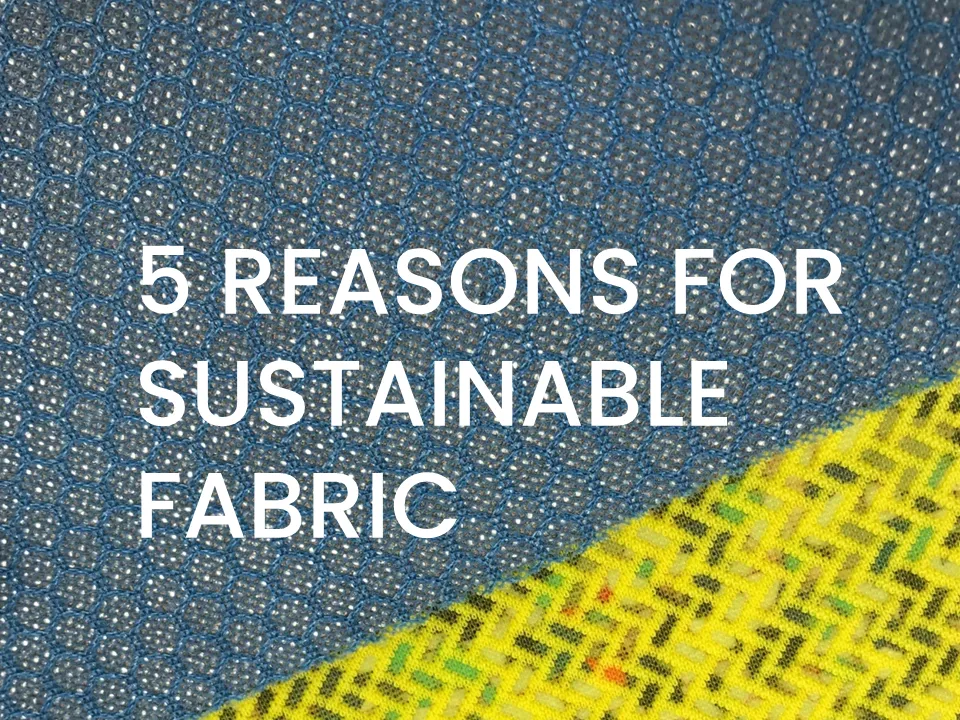Fashion
Benefits of Natural Sustainable Fabrics

Utilizing clothing made of sustainable, natural materials can have several advantages. For example, natural fabrics can be made from organic cotton, recycled polyester, and linen. You’ll also find that these fabrics are easier to care for.
Organic cotton
An excellent method to lessen your influence on the environment is to get your clothing produced from organic cotton sustainable textiles. Organic fabrics are long-lasting, biodegradable, and contain no harmful chemicals. The label will also tell you whether the garment was produced in a socially responsible manner.
Organic cotton is grown using natural methods. It uses less water than conventional cotton, and biological pest reduction techniques accompany the harvest. It is good news for the environment and people allergic to chemicals.
Organic cotton clothing is more durable. It’s softer and less likely to cause skin irritation. It also helps farmers save money. It also helps reduce exposure to allergens and environmental hazards.
While organic cotton is often more expensive, it is a good investment. It provides a stable income, helps farmers earn a fair wage, and helps protect the environment. It also helps reduce your carbon footprint.
The benefits of organic cotton sustainable fabrics may seem obvious, but it is essential to understand the details. For instance, organic cotton uses about 88% less water than conventional cotton. And if all of the world’s cotton were grown organically, pesticide use would be reduced by 98%.
Bamboo
Using natural sustainable fabrics from bamboo can improve your health and the environment. Bamboo is a fast-growing plant that needs very little water and pesticides. It has a unique ability to prevent soil erosion and is also pest resistant. It is also a very durable fabric. Bamboo is also known for its breathable properties and softness.
Numerous processes may be used to make bamboo cloth. Some businesses refer to their merchandise as bamboo cloth. Others carry on with the manufacturing process.
Bamboo fabric can be produced through a chemical process. The standard method involves using a chemical compound to extract cellulose from bamboo. The use of these chemicals poses a threat to the environment and workers. However, there are also mechanical methods of production. These methods are more environmentally friendly, but they are also more expensive.
A closed-loop approach may also be used to make bamboo cloth. It is the most eco-friendly production technique. Manufacturers soak their material in a natural enzyme solution in a closed-loop process. This method also results in minimal pollution.
Recycled polyester
Whether you’re an individual looking for a more eco-friendly choice or a company looking to minimize your environmental impact, recycled polyester can help. It’s a durable, breathable fabric that is easy to care for. Additionally, it may be used with natural fibers to minimize environmental impact.
Polyester is one of the most common materials used in the textile industry. It’s used in sportswear, loungewear, and outdoor clothing. It can also be blended with other fabrics to create a new look.
The main benefit of recycled polyester is that it reduces greenhouse gas emissions. In addition, it helps protect marine ecosystems. It also encourages consumers to be more aware of recycling and reduces dependency on fossil fuels.
The production of garments has a significant influence on the environment. The growing of cotton requires a lot of water. In addition, polyester manufacturing involves a lot of energy. Many garments are made from something other than polyester to avoid this problem. Often, they are blended with cotton or other materials.
Polyester is best used in garments that perform well technically to be genuinely sustainable. While recycled polyester is more environmentally friendly than virgin polyester, it is not a perfect solution. It is still less energy efficient than most natural materials.
Hemp
Whether you are a designer or a consumer, sustainable hemp fabrics are a great choice. They are environmentally friendly, lightweight, durable, and hypoallergenic. They are also machine washable, making them great for various clothing applications.
Hemp fiber is also used to make paper, canvas, and ropes. The production process is also minimally impactful on the environment. It requires less water and soil nutrients than other crops and can be planted in almost any soil.
Hemp clothing also lasts longer than other natural materials. It wicks moisture away from the body, is hypoallergenic, and is breathable. Additionally, it is moth and rot-resistant. A maximum of 20% of its weight can be absorbed. Additionally, it can withstand ultraviolet light.
Hemp fabric is an excellent choice for sensitive skin. It has a rougher feel than cotton and a soft, natural texture. It can be machine-washed and dry-cleaned.
Hemp is also considered a more sustainable fabric than cotton. It uses less water and fossil fuels than cotton, which is why it is popular in eco-friendly clothing.
Linen
Using natural and sustainable fabrics can positively impact the environment and your health. They are also more stylish. They are biodegradable, breathable, and lightweight. In addition to responding to heat, natural materials are naturally mold-resistant.
There are a variety of fabrics, including linen, hemp, and silk. Linen is a breathable, durable, lightweight fabric made from flax plant fibers. It also requires fewer resources to produce than cotton.
There are also plant-based fabrics, such as rayon and bamboo. These fabrics absorb four times their weight in water, making them feel incredibly soft.
Wool is a durable animal-based fiber known for its warmth and comfort. It’s also one of the most environmentally-friendly fabrics.
Natural fabric alternatives, such as hemp, also benefit the environment. Hemp plants require minimal water to grow and don’t require pesticides or fertilizer. To save water, kapok tree fibers can be blended with organic cotton during harvest.
Many fashion designers are incorporating natural fabrics into their collections. However, the best way to tell if a brand’s materials are sustainable is to look at its production processes.
read more about… how-duana-melo-made-it-big-in-the-world-of-fashion/